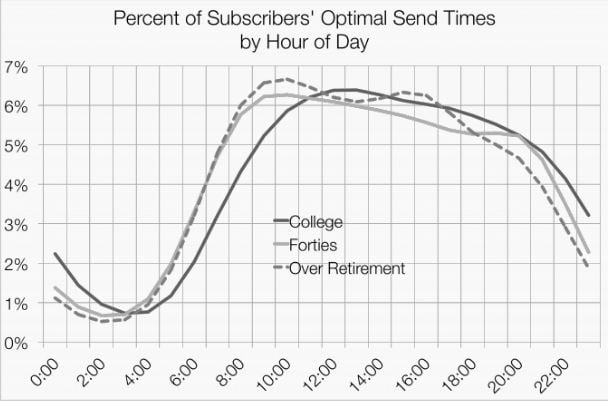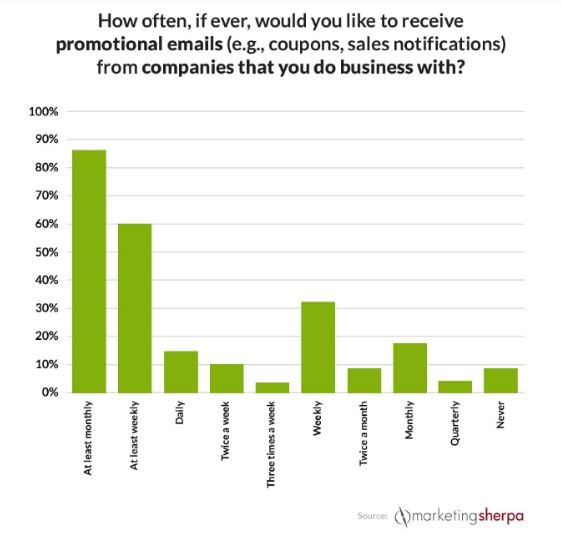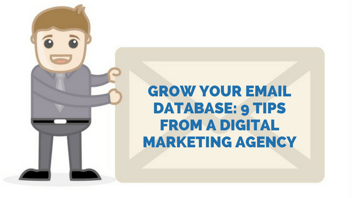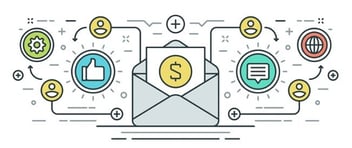After you’ve spent time carefully cultivating your e-mail database and perfecting your e-mail copy and design, you’ll no doubt be eagerly awaiting your click and conversion rates. In order to get these as high as possible, you’ll want to make sure your e-mails are being opened and enjoyed by as many people as possible. On that note, here’s 8 ways to increase your e-mail open rates, tried and tested by a digital marketing agency!

1. Subject Line
The first thing someone will read when your e-mail lands in their inbox is most likely to be the subject line. Subsequently, you’ll need a killer subject line to make sure the recipient opens up your e-mail. Here are some top tips to perfect your subject line.
- Personalisation - People love to hear their own name so make sure if you have that information that you include it in the subject, as this will directly engage the reader.
- Variation - Keep your subject line fresh and don’t use the same or similar subject lines. A great example of this is newletters. The open rate for newsletters tends to start high, but after a while, that ‘February Newsletter’ subject line isn’t going to spark the interest of your recipient anymore.
- Length - Keep your subject line short, ideally 50 characters or fewer.
- Emojis - Depending of course on your audience, e-mails with relevant emojis often speak to the recipient on a more personal level as they tend to interact with friends using emojis. Again, make sure it’s audience appropriate. You may not want to use a bank that sends e-mails with subject lines full of emojis, for example!
- Urgency - It’s well known that people can be influenced by a sense of urgency! If your e-mail contains, for example, ‘50% off for two hours only!’ it’s far more likely to get opened. Play on users' fear of missing out!
- Statistics - Numbers are compelling! ‘Increase lead generation by 50%’ is likely to result in a higher open rate than ‘increase your lead generation’.
There’s also a couple of no-nos you need to be aware of when creating a subject line...
- Don’t make false promises - If you promise a user a free trial but when they open your e-mail they find they aren’t eligible this will no doubt result in frustration and potentially leave a mark on your reputation.
- Don’t go overboard - You want your subject line to be attention-grabbing but if you put 5 asterisks on either side or WRITE ALL IN CAPITALS chances are it’s going to harm your credibility with the recipient.
2. Timing
There are statistically more successful times to send e-mails. Finding the best time for your e-mail will depend on your industry and your buyer persona (target market). This blog from Mailchimp might help shed some light for you. It’s full of industry insight into the optimal e-mail send times for people of different ages, job titles, locations and more!

When you’re deciphering your optimal send time, remember to keep in mind whether your content is relevant to the time you’re sending it. If you run a restaurant/bar, the optimal time for your target market could be 8am, but that e-mail letting them know your happy hour offers might be best sent at 4:30pm on a Thursday!
3. Frequency
Your e-mail frequency needs to be kept at a happy medium between spamming and sporadic. Too often and you will become a nuisance, too rarely and you will become unfamiliar and lose the interest of the subscriber. While it would be useful to have a hard and fast rule on how often you should be sending e-mails, it really is dependant on your business and e-mail content. You need to think hard about the online or shopping habits of your subscriber.
For example, if you’re selling one product, a high value piece of software, you will want to keep promotional e-mails to a minimum. You need to nurture that lead, rather than try and push them into a sales decision with emails. Hassling them will just give them more reason to unsubscribe. Instead, try e-mails on a bi-weekly basis. On the other end of the scale, if your product is B2C fashion, you may want to send e-mails twice a week or even more if you have new and exciting deals, flash sales and products every day!
A survey was conducted was conducted on MarketingSherpa into the frequency of e-mails. The survey results highlight the differing opinions in how frequently people want to be contacted. This argues for segmentation of your e-mail lists, which we will discuss further in the article (skip to number 8 to read it now).

The results do show however that positioning your e-mail frequency somewhere more than monthly, but less than twice a week is preferable, generally speaking.
4. Keep Your List Fresh
In order to raise your open rate, or rather, make sure it’s a true reflection of how your subscriber list is engaging, you’ll need to keep your e-mail list fresh. Get rid of all those dormant and non deliverable accounts (referred to as hard bounces). It may reduce your e-mail database size a little, but it will be worth it in the long run as your open and click rates will be a true representation of your recipients' behavior.
If you have 1,000 e-mail addresses in your database and 200 of them are opening your e-mail, you have an open rate of 20%. However, if 200 of those e-mail addresses are non deliverable, your actual open rate is 25%! This isn’t so much a way to increase your open rate, but a way to help you see the accurate number.
A few e-mail address you may want to remove from your list include:
- Duplicate - While some e-mail software may remove these for you, it’s best to make sure. Not only will it skew your analytics but may be frustrating for the recipient.
- Bouncing - A soft bounce is an e-mail address that is not delivering for a temporary reason like a full inbox or an out of office. Soft bounces should stay in your e-mail database, but keep a close eye on them. If a soft bounce continues for an extended period of time, it may be best to remove them. A hard bounce is an e-mail address that is undeliverable, blocked or invalid. These need to be deleted.
5. Be Interesting and Valuable
You might think it goes without saying, but it’s important that your e-mail content starts off interesting, engaging and useful to the user, and each e-mail from then on maintains that. If you build trust and a relationship with the recipient from the very beginning, it will increase the likelihood of them opening your emails in the future. If the quality of your content takes a dive, so too will your open rate!
In the same sentiment, to help with the quality of your e-mail content, it’s important to make sure your e-mails are optimised for mobile. Here are some stats from our friends at Hubspot that will convince you that you need to optimise your e-mails for mobile:
- 48% of emails are opened on mobile devices
- 69% of mobile users delete emails that aren't optimized for mobile
- 89% of email marketers are losing leads and opportunities because they're not optimizing their emails
You can find Hubspot's tips to keep your e-mails mobile optimised here.
6. Avoid the Spam Filter!
You want to make sure all of your list is receiving your email to open it - so make sure you avoid that spam filter!

There are some rules from e-mail giants Mailchimp that will contribute to keeping your e-mail address from being flagged as spam. If someone the same IP address has been flagged for spam in the past, you might be flagged for spam too, for example. Make sure you’re starting with a clean slate.
Secondly, the coding and formatting of your e-mail will be taken into consideration. Some spam filters will be triggered by sloppy coding or extra tags. If you’re not confident with coding, the best way to avoid this is to work with a designer or use an e-mail template.
7. The Sender
People like talking to other people! Don’t underestimate the personal touch. You shouldn’t be sending e-mails from noreply@example.com, this instantly disengages the recipient before they've even opened your e-mail.. Surely you’re sending e-mails because the recipients, prospects and leads you may have a sales opportunity with. If that’s the case, why would you want to close down communication with them by having a ‘no reply’ e-mail address?
If it’s appropriate, send it from a person, if not, send it from an info@ or contact@ address and allow users to reply.
8. Segmentation
Segmenting your e-mail database and tailoring the e-mail to each segment will do wonders for your e-mail open rates. Segmentation is a way to improve a lot of things we have already talked about like personalisation, value and relevancy. You can segment your audience by location, age, purchase or conversion history, gender and more!
Using age as an example, having a subject line full of emojis might engage users ages 18 - 25, but recipients aged 40+ may instantly turn off. Segmentation allows you to cater to the specific audiences you create.
Alternatively, you could segment based on conversion history! For example, if your business sells training courses you will be able to segment based on which training course they have registered an interest in and send different e-mails to those interested in first aid, than you would to those interesting in management training. The more relevant you can be, the more valuable the recipient will find your content.
Hubspot has written a great article with 27 examples of how you can use e-mail segmentation to your advantage.
Now you’re armed with all these tips to increase your e-mail open rates, the best next step is to test, test, test! If you’re blindly making all these changes, it will be impossible to tell if or what particular change has improved your e-mail open rates - you need to get A/B testing!
E-mail marketing, whether in news blasts or carefully planned workflows, are a key part of your inbound marketing success! To find out more about Inbound Marketing and how it can help your business generate more business, click here!





